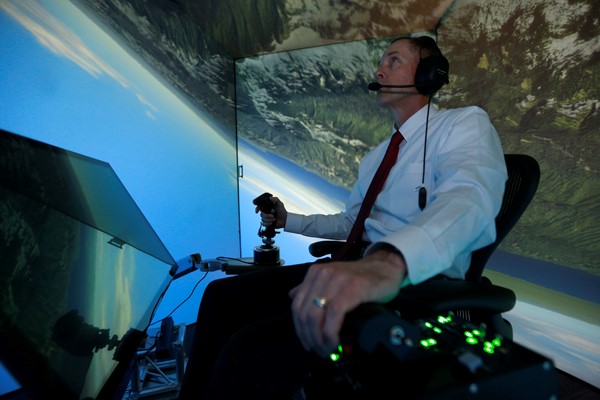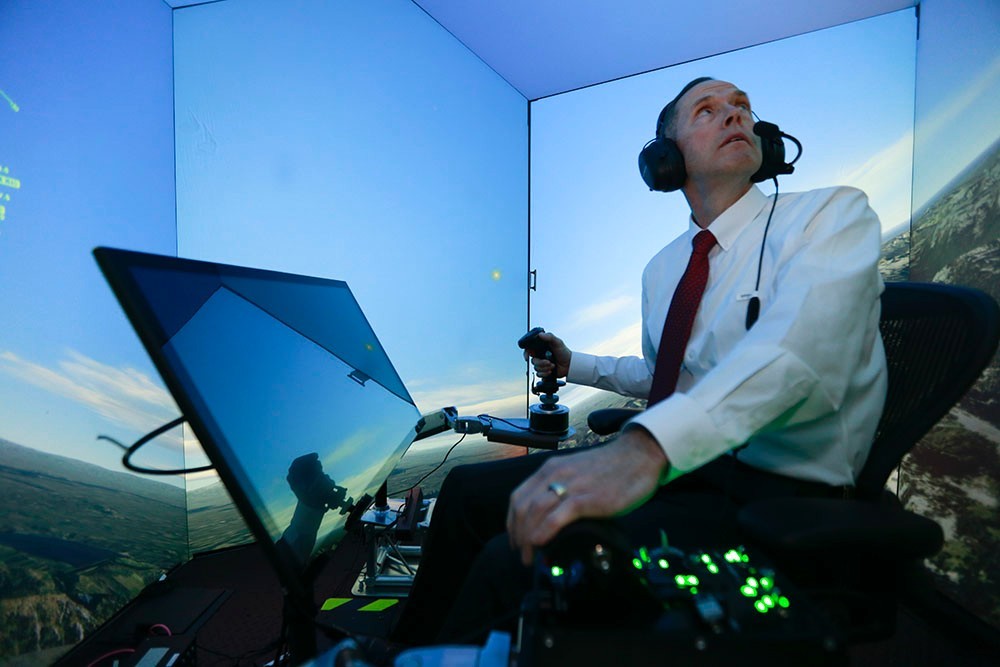
A new advanced software developed by a University of Cincinnati doctoral graduate has proven itself more capable than a seasoned ace, outmaneuvering and eliminating retired U.S. Air Force Colonel Gene Lee in a life-like simulation in every trial. Lee, who serves as an instructor and Air Battle Manager with decades of fighter aircraft experience, has never encountered such an “aggressive, responsive, dynamic, and credible AI” in the 30 years that he’s spent testing combat software.
ALPHA, the “artificial intelligence” in question, represents a significant breakthrough in software designed for testing unmanned combat aerial vehicles (UCAVS) in simulated air combat missions.
After constantly defeating the baseline AI opponents used by the Air Force Research Lab in its training simulations, ALPHA graduated to face expert human pilots. Once Colonel Lee stepped in, the outcome remained the same; ALPHA shot Lee out of the sky during every engagement and Lee was unable to score even a single kill against the software. “I was surprised at how aware and reactive it was. It seemed to be aware of my intentions and reacting instantly to my changes in flight and my missile deployment. It knew how to defeat the shot I was taking. It moved instantly between defensive and offensive actions as needed,” Lee said to Phys.org.

In every instance that a human pilot faced off against ALPHA the same outcome repeated: ALPHA won. Even when it was handicapped in terms of speed, turning, missile capability and sensors, human opponents could not survive the dogfight.
Nick Ernest, the doctoral graduate and founder of the company Psibernetix, Inc. — whose tools were used to construct the software, sees the marriage of AI and U.S. aircraft capabilities as a revolutionary leap forward in military prowess, minimizing reaction time in a hostile environment where every microsecond counts. For context, fighter pilots battle in speeds over 1,500 miles per hour at relatively low altitudes of only 40,000. Any split-second miscalculation may have dire impact.
ALPHA can pull in sensory data, organize it, and logically map out a tactical decision while accounting for multiple possible outcomes within a single millisecond; that’s about 250 times faster than its human opponents can even blink. “This isn’t for up-close dogfighting, or using your eyes to look out the cockpit,” Ernest says. “It’s a lot of looking at what your sensors are telling you and interpreting that to tell you if you have a tactical advantage at this particular time and what your response should be.”
Similar to how Facebook, Google, and other analytics can source massive amounts of data and make quick decisions on what personalized ads to show, ALPHA sources data from all its sensors and makes lightning-quick decisions. But in this case, the term “artificial intelligence” is hyperbole; there’s no artificial neural networking at play. Instead, ALPHA’s algorithms require no more computing power than a low-budget PC, thanks to a system of language-based control called genetic fuzzy logic, based on an up-scaled version of the traditional fuzzy logic.
Ernest, whose company developed genetic fuzzy logic, explains that fuzzy logic has been around for decades, and is often used in industrial control applications. It’s just that up until now, scalability did not exist. Fuzzy logic excels at making predictions based on a few inputs, rather than checking off every single parameter before devising an output. According to Ernest, fuzzy logic at its most basic level is “more like how humans approach problems. Take for example a football receiver evaluating how to adjust what he does based upon the cornerback covering him. The receiver doesn't think to himself: 'During this season, this cornerback covering me has had three interceptions, 12 average return yards after interceptions, two forced fumbles, a 4.35 second 40-yard dash, 73 tackles, 14 assisted tackles, only one pass interference, and five passes defended, is 28 years old, and it's currently 12 minutes into the third quarter, and he has seen exactly 8 minutes and 25.3 seconds of playtime.'”
Instead of worrying about the intricacies of every single statistic, the receiver would just label the quarterback as “good,” and move forward from there. The challenge is that as the number inputs grow, traditional fuzzy logic systems become too overloaded to run on contemporary computers. Because ALPHA compartmentalizes fuzzy logic problems in smaller segments while maintaining the same overarching relationships between the inputs, ALPHA can handle hundreds of thousands of if/then scenarios as well as the rules encompassing thousands of variables. As a result, the software can even run off of smartphones.
What does this spell out for the future of aerial combat? Considering that it costs millions of dollars to train a single fighter pilot, the software will undoubtedly replace human pilots once machine vision and control algorithms create fully operable unmanned aircraft. Yet Ernest sees his software extending being unmanned aircraft, as a solution for self-driving cars and even pharmaceutical research.
What impact do you foresee unmanned vehicles having on warfare? Let us know in the comments below.
Advertisement
Learn more about Electronic Products Magazine





